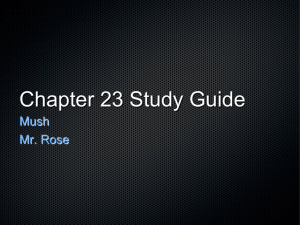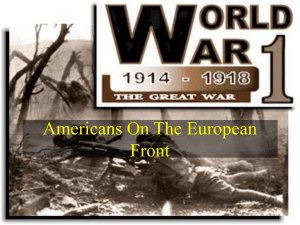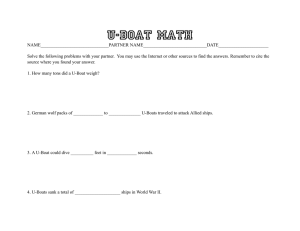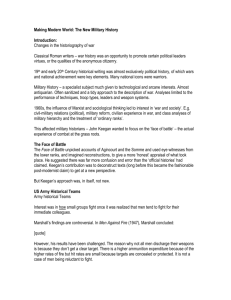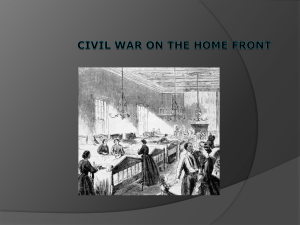Chapter 12 Section 2 Notes The United States Goes to War
advertisement
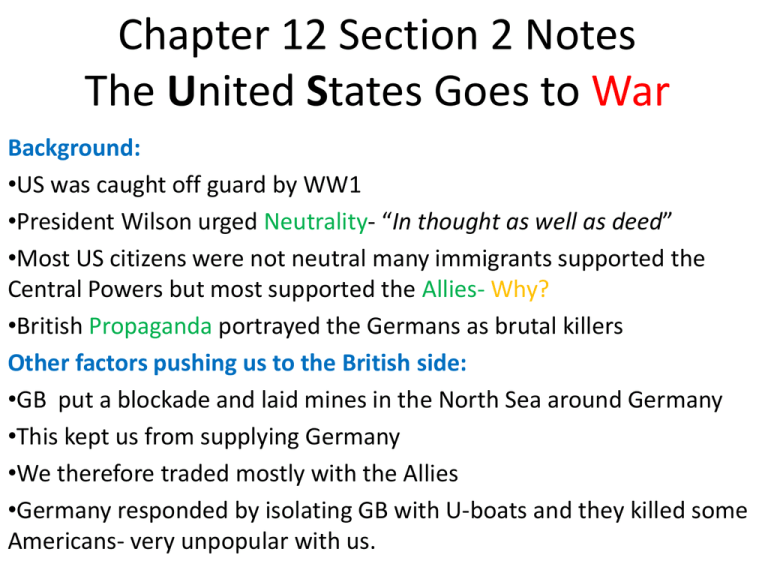
Chapter 12 Section 2 Notes The United States Goes to War Background: •US was caught off guard by WW1 •President Wilson urged Neutrality- “In thought as well as deed” •Most US citizens were not neutral many immigrants supported the Central Powers but most supported the Allies- Why? •British Propaganda portrayed the Germans as brutal killers Other factors pushing us to the British side: •GB put a blockade and laid mines in the North Sea around Germany •This kept us from supplying Germany •We therefore traded mostly with the Allies •Germany responded by isolating GB with U-boats and they killed some Americans- very unpopular with us. Sinking of the Lusitania Background: Because Germany could not match GB’s surface fleet they had to resort to using U-boats to establish a blockade. War has an honor code- especially on the high seas. One of the major rules is that you do not intentionally kill noncombatants. U-boats cannot obey this rule and therefore a nation who uses these is considered dishonorable (bad, evil etc) U-Boat Chain of Events U-boat actions that created a negative attitude in the US: • March 28, 1915- British liner was sunk- killing one American • May 7, 1915- Lusitania was sunk- killing 128 AmericansGermans accused the Lusitania of carrying weapons • August 1915- The Arabic was sunk- Killing two Americans • After protests the German’s issued the Sussex Pledge- the Germans halted unrestricted submarine attacks • February 1, 1917- Germany resumed unrestricted attacks and promptly sank 5 American ships The Road to War • All the U-boat stuff • American bankers loaned huge amounts of $ to the Allies • 1916- President Wilson increased out military preparedness with the National Defense Act • March 1, 1917- The Zimmerman Note which offered Mexico its lost territories if they attacked the US • April 2, 1917- the President addressed Congress asking for a declaration of war • April 4, 1917- Congress officially declares war Mobilizing for War Getting Soldiers • Selective Service Act- May 18, 1917- required men between the ages of 21-30 to register with local draft boards- later changed to men between the ages of 18-45 • More than half of the 4.8 million who served were draftees • Some thought the draft would make America more democratic by bringing people of different backgrounds together- The reality was that African Am’s, Am Indians and Mexican Am’s suffered discrimination in the service • African Am’s were generally banned from combat and often performed menial duties Mobilizing for War Training Troops • Simple designs allowed for the building of 16 training locations- though not enough uniforms and equipment • Upon arrival the troops were given medical exams • Spent considerable time learning military rules- “spit and polish”- cleanliness was especially important- why? • Extensive practice at the rifle range, learning hand-to-hand combat and the use of the bayonet • By the end of camp the soldiers were in much better health than when they arrived- for many of the soldiers it was the first time they had nutritious food and medical care Over There • • • • • • • • First US troops arrived in France in late June 1917 They were led by General John J. Pershing They were called the American Expeditionary Force (AEF) Pershing refused to relinquish (give up) control of the AEF to the Allies One of the common exclamations by US troops was “Lafayette, we are here” What’s this about? Most AEF soldiers felt they were doing important work to prevent the world from experiencing a 2nd Dark Ages Early on the AEF did a lot of constructing and didn’t see combat until 1918 Thousands of women volunteered with the Red Cross, YMCA etc. Convoy No Us Soldiers died crossing the Atlantic Ocean
